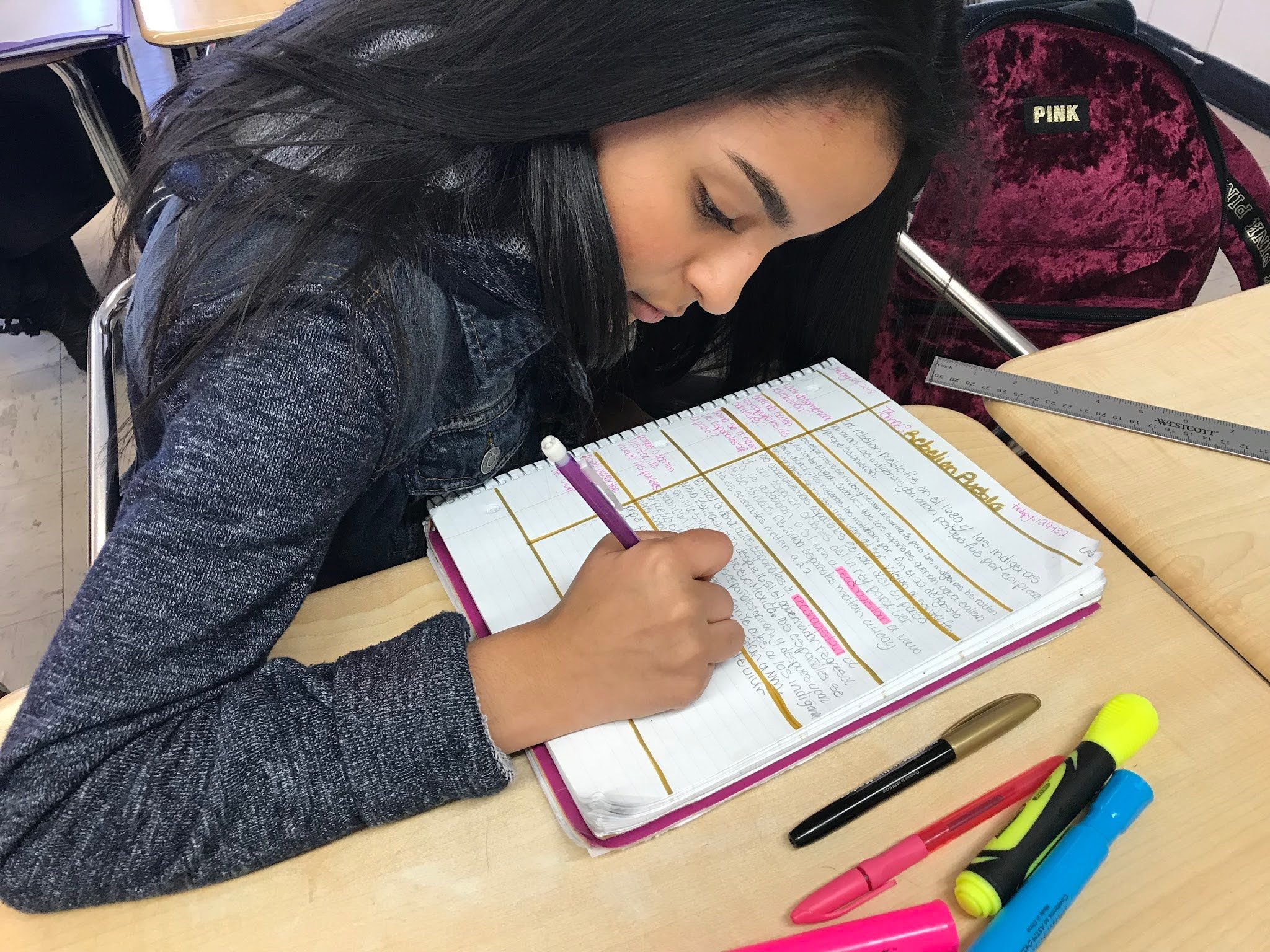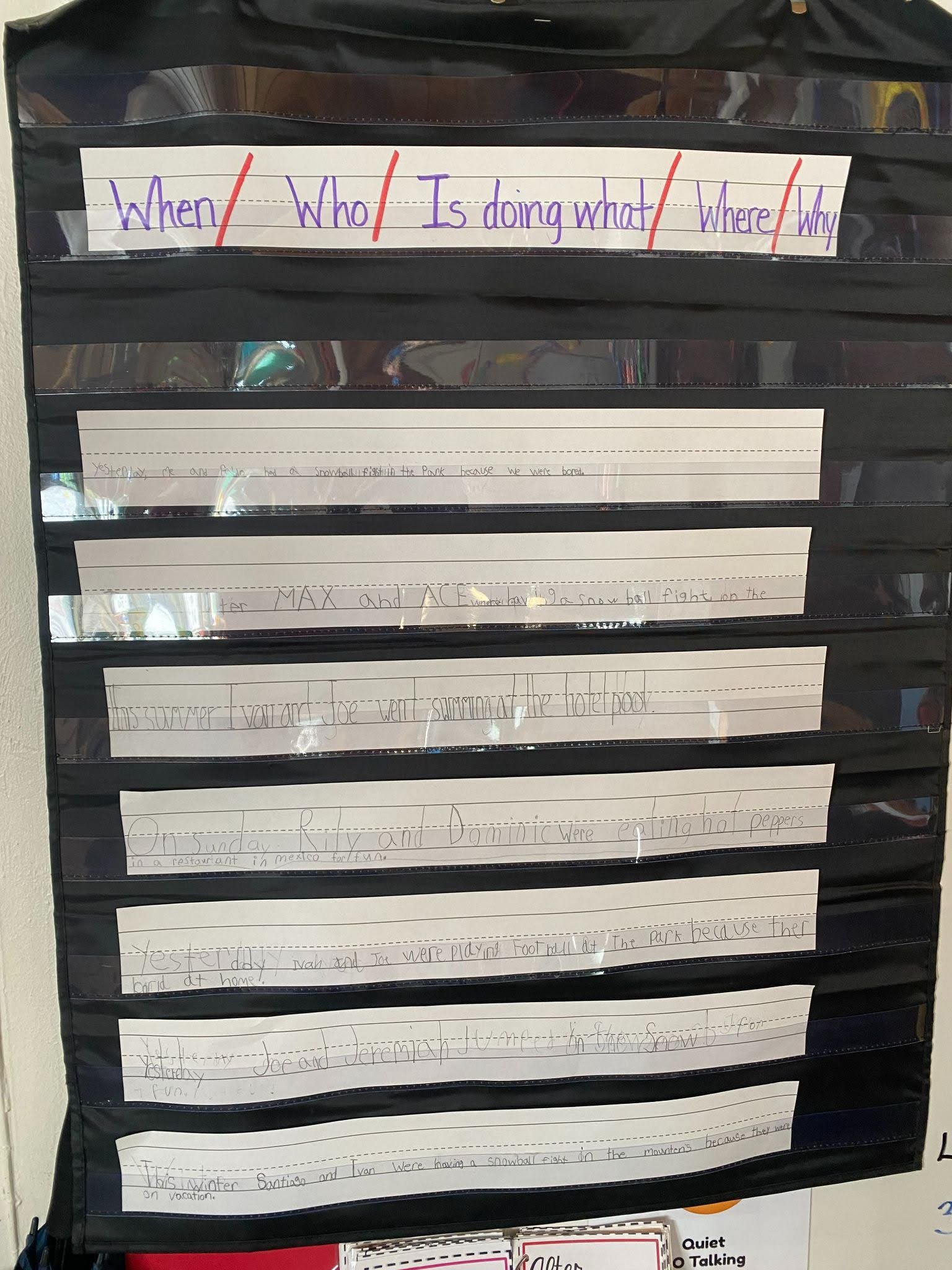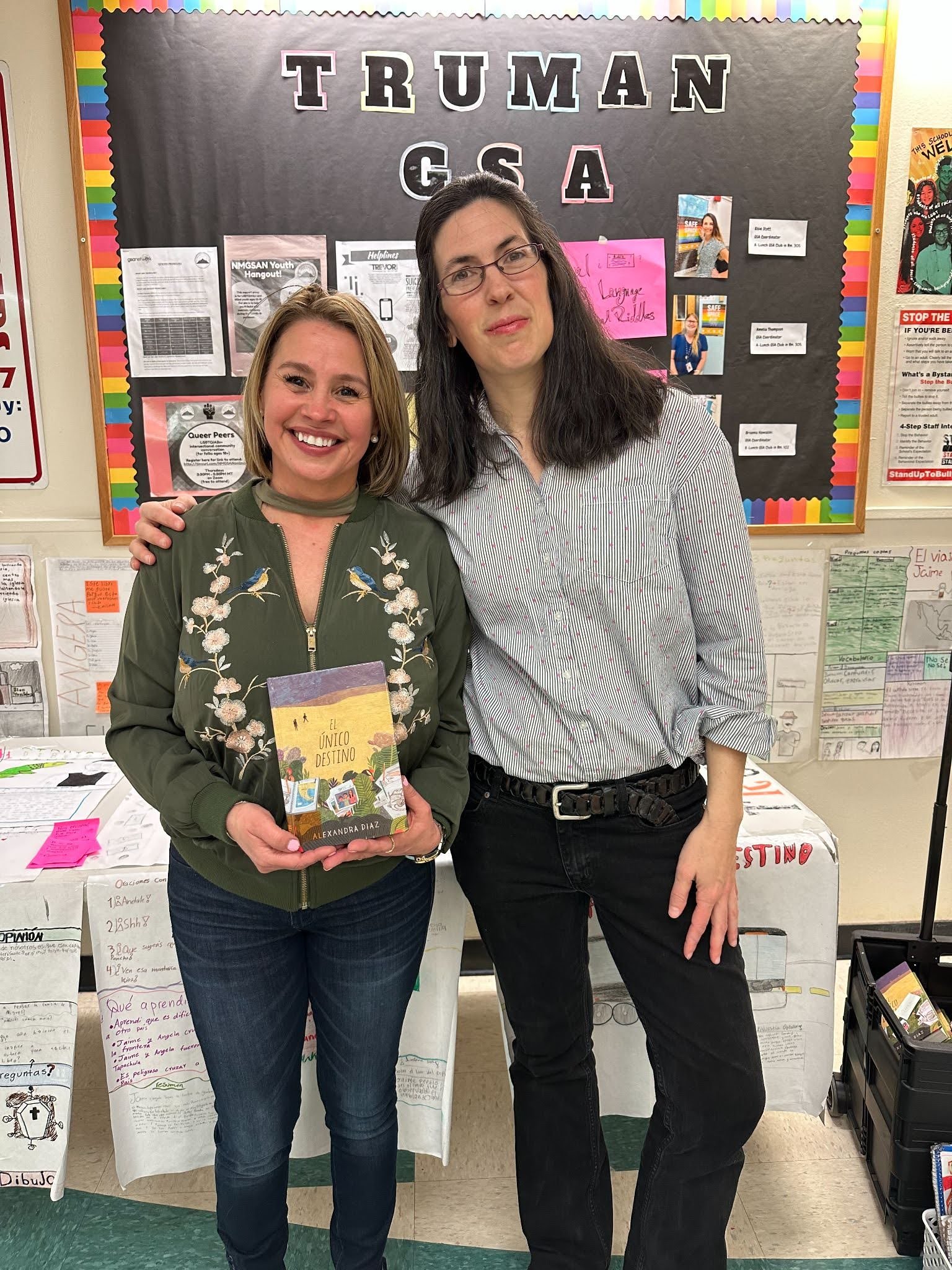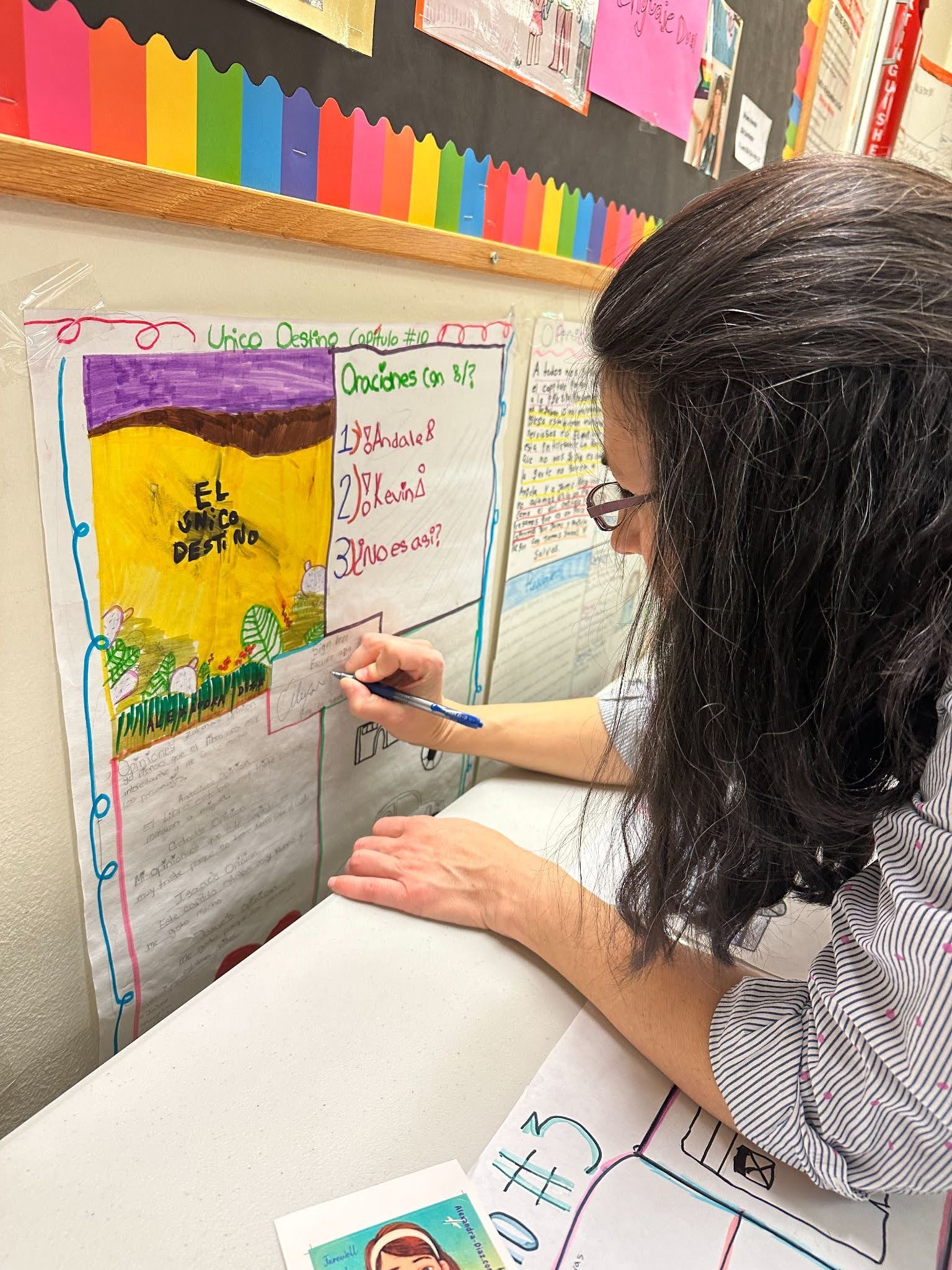Writing Practice Strategies for ELLs
Thanks!
Here’s your FREE presentation PDF!

Strong writing skills unlock success in the classroom, the work world, and everyday life.
Fear-free writing activity ideas for ELL teachers
Writing is a crucial life skill. It’s virtually impossible to achieve academic success without it, and beyond school, it’s the cornerstone of communications that lead to job interviews, effective workplace collaboration, and other potentially life-changing opportunities. Today more than ever, at many of our most important career and personal turning points, self-representation depends on our ability to express ourselves on the page or screen.
The journey to writing proficiency comes with challenges, especially for English language learners. And ELL students and teachers face additional obstacles as they work to build writing skills. But strategic writing instruction practices, rooted in the latest research and practical insights, can turn these challenges into opportunities for growth and learning.
Writing Challenges for English Language Learners
Writing performance is notoriously under-studied among US students generally. One 2011 study found that only 27% of US eighth- and twelfth-grade students demonstrated writing skills “proficient” or better. Additionally, research has shown a strong correlation between a student’s writing proficiency and reading level, and more recent literacy metrics also suggest worrying disparities between L1 and L2 English speakers. In 2019, the average reading score for fourth-grade ELL students (191) was 33 points lower than that of their non-ELL peers (224); for eighth-graders, it was 45 points lower. Many experts believe the writing performance gap between these two groups is at least as wide.
Several factors contribute to writing proficiency deficits for English learners. Challenges for ELL students include:
Skipped basics: Few students receive specific instruction in composition skills (outlining, language arts styles, etc.).
L2 vocabulary limitations: Assignments that include or require too many unknown English words undermine ELLs’ ability to complete them.
L1 vocabulary mismatches: Prompts written in ELLs’ first language can alienate if tone/vocab is too different from learners’ lived experiences with the language.
Relatability: Writing activities that don’t take into account ELL students’ cultural background and daily lives hinder understanding and engagement.
Intimidation: Confusion and uncertainty created by other factors can sabotage confidence and increase resistance.
Teachers working with ELLs face their own obstacles to helping their students succeed. These challenges include:
Content quality: Well-written activities, aligned with curriculum and relevant to students, are hard to find.
Time: Process of finding, assigning, reviewing, and returning activities takes more time than many busy teachers have.
Guidance: Curriculum often covers “what” writing milestones students should hit, but not “how” teachers can build up to them.
Visibility: Most schools assess language writing just once a year, making it hard for teachers to gauge student understanding and address learning gaps.
Classroom Writing Opportunities
Writing is not only a fundamental skill for academic success, but also a critical tool for effective communication in both professional and personal realms. In the classroom setting, particularly for ELL students, dedicated writing exercises offer more than just practice; they provide a critical platform for learning, feedback, and growth.
Enabling a focused environment: Classroom settings inherently offer a controlled environment which is ideal for minimizing distractions and maximizing focus on writing tasks. This environment is essential for ELL students who need to concentrate on the complexities of writing in a second language, which can include grasping new vocabulary, syntax, and semantic rules.
Teacher involvement and feedback: One of the most significant advantages of classroom writing is the presence of a teacher who can observe, intervene, and assist immediately. Teachers play a crucial role in identifying language misconceptions and providing corrective feedback. Immediate and specific feedback helps students adjust their learning strategies in real-time, enhancing their understanding and retention of new language rules
Visibility into student proficiency: Regular classroom writing exercises give teachers valuable insights into each student’s proficiency levels, strengths, and areas needing improvement. This visibility is crucial in adapting teaching methods and materials to better suit the class’s needs, ensuring that all students, regardless of their starting level, have the opportunity to advance.
Promoting technical skills: The classroom is the best place for ELLs to receive technical guidance on grammar, syntax, semantics, and writing conventions. Teachers can provide explanations and examples of correct usage, model these skills, and directly address any errors students may make, which is harder to do in less structured settings.
Best Practices in Classroom Writing
To make the most out of classroom writing opportunities, educators should consider several best practices:
Regular, low-pressure practice: Normalize writing by integrating it regularly into classroom activities. This helps reduce anxiety around writing and encourages students to try without fear of harsh criticism.
Growth mindset: Encourage a growth mindset by celebrating mistakes as a natural part of learning and emphasizing the progress made. This approach helps destigmatize errors and supports students in taking risks necessary for learning.
Showing, not telling: Instead of merely dictating correct usage, teachers should model it through their own writing and corrections. This method helps students internalize the examples and understand their application.
Timely, frequent feedback: Provide feedback that is both specific to the task and frequent, allowing students to continually refine their skills based on recent, relevant advice.
Use of digital tools: Leverage technology to streamline the assignment and review process. Digital tools can offer immediate feedback and help scale personalized writing instruction, making it easier to address the needs of a diverse student group.
By embracing these practices, educators can create a supportive and effective writing-focused classroom environment that not only addresses the unique challenges faced by ELLs but also enhances their confidence and competence in using written language as a powerful tool for communication.
Strategies for Building ELL Writing Confidence
Writing can be a daunting task for ELLs, but with the right strategies, educators can transform the classroom into a space that fosters confidence and creativity. This section delves into six key strategies designed to enhance writing confidence, followed by additional ideas to enrich classroom writing practices.
The first four strategies showcase practical applications from the experiences of bilingual resource teachers at Albuquerque Public Schools. Strategies five and six highlight the integration of technological tools like LearningWrite to modernize and enhance writing instruction.
Strategy 1: Create a Supportive Environment
The foundation of any learning experience, especially in language acquisition, is the environment in which it takes place. A supportive classroom environment encourages ELLs to express themselves without fear of judgment, and to accept constructive criticism without shame. This respectful and growth-focused culture maximizes exploration and learning.
Example: The Dictado
The Dictado is a routine in which the teacher dictates a series of phrases, sentences, or paragraphs, and the teacher and students collaboratively correct them. The process serves to teach and reinforce basic writing skills in a low-pressure, collaborative setting. Students have the opportunity to learn from and correct mistakes in a supportive, collaborative context.
(Examples of the Dictado collaborative correction process for a short student writing response.)
Strategy 2: Group Projects
Collaboration is key in making writing a less solitary and more engaging activity. Group writing projects foster a sense of community and makes writing a collective achievement, thereby reducing individual anxiety and building social bonds. Students can work together to build stories, poems, scripts, essays, and more.
Example: Cooperative Strip Paragraphs
One format for facilitating group writing is the cooperative strip paragraph. In this exercise, student teams write a collaborative response to a topic by having each member write one sentence on a strip of paper. Strips are then combined into a paragraph, which the whole group revises together. This strategy can be repeated to build a longer piece of writing in any of the styles mentioned above.
(Entries in a dialogue journal showing ongoing correspondence between a student and her mom.)
Strategy 3: Create a Writing Community
Establishing a writing club or group provides a sustained platform for sharing and discussion. It provides a dedicated space in which students can encourage and draw inspiration and encouragement from one another.
Example: Dialogue Journals
Dialogue journals facilitate ongoing written conversations between students and teachers or parents. One person writes the first entry in the journal, and then the other reads and responds with their own entry, during class time or as homework. This correspondence continues throughout the school year, creating personalized learning experiences and building strong teacher-student relationships through continuous, informal interaction. These journals are also a great way to observe writing proficiency gains over time.
(Entries in a dialogue journal showing ongoing correspondence between a student and her mom.)
Strategy 4: Guest Speakers & Authors
One powerful strategy for helping students understand the potentially life-changing power of writing and literacy is to let them hear from professional writers, especially ones with ties to the local community or culture. Inviting authors and speakers who can share their writing journeys energizes students and makes the process of writing more tangible and inspiring.
Example: Alexandra Diaz and Jimmy Santiago Baca
Albuquerque Public Schools is New Mexico’s largest school district, serving over 70,000 students of whom 20 percent are Spanish-speaking ELLs. The school district has hosted talks by many guest writers over the years as part of its mission to advance equitable learning for all students.
In recent years, APS hosted New Mexico-based author Alexandra Diaz, author of the award-winning novel The Only Road, as well as several other books for young adults (available in Spanish and English). Alexandra’s workshop engaged students in topics like cultural diversity, exploring perspectives through literature, and story development. APS students also had the opportunity to hear from award-winning Chicano-American poet and writer Jimmy Santiago Baca. While serving a five-year prison sentence, he learned to read, started writing, and eventually emerged as a prolific artist of the spoken and written word. Jimmy shared his experiences with APS high school students as a role model for personal transformation, and for finding empowerment through writing and self-expression.
(Photos from author Alexandra Diaz’s storytelling workshop at Albuquerque Public Schools.)
Strategy 5: Integrate Technology
Tech tools can make the writing instruction process more relatable and engaging to modern learners. Advanced automation features can significantly enhance the engagement and effectiveness of writing practice.
Example: Automated Writing Evaluation with LearningWrite
The LearningWrite online platform leverages AWE systems to accelerate and standardize writing practice, helping teachers track and support proficiency. Teachers can choose high-quality prompts (in English or Spanish) from the LW Activities library, or create their own custom activities. LearningWrite’s autograding feature instantly generates standardized ACTFL/STAMP scores for students’ Spanish writing assignments.
(LearningWrite’s auto-scoring feature instantly generates ACTFL/STAMP scores on Spanish writing activities to speed up feedback and learning.)
Strategy 6: Real-World Relevance
It’s hard to get students to care about learning new skills if they don’t see their usefulness beyond the classroom. Fortunately, writing comes in handy in many real-life situations that are relatable to students, so it’s easy to answer the “how will I use this?” question. Finding ways for students to experience how writing can be a powerful and essential communication tool beyond the classroom can increase their motivation and enthusiasm to practice.
Example: AI-Enabled Conversations with LearningWrite
LW’s Chat Scenario activities give students interactive, on-demand writing practice with a fluent conversation partner, powered by AI. Chat Scenarios provide realistic, relatable, and fun communication experiences that leave students wanting more. Teachers can test-drive a scenario before assigning it and customize conversation settings to support specific lesson goals.
(LearningWrite’s AI-powered Chat Scenario activities provide on-demand conversational practice with a realistic partner about relatable topics and situations.
More Strategies for Creating Confident Writers
1. Provide choice: When possible, give students agency in deciding writing activity types or topics. Students are more likely to engage with writing about a subject that aligns with their passions.
2. Use diverse writing formats: Introduce various writing formats, such as short stories, poems, journal entries, essays, plays, or even social media posts. Variety keeps writing fresh and exciting.
3. Incorporate multimedia: Encourage students to use images, videos, and sound to enhance writing projects. This approach helps engage students with a broader range of learning styles (visual, auditory, etc.)
4. Writing games & activities: Stage informal writing contests, have students select writing topics randomly from a hat, or do collaborative storytelling exercises.
5. Set goals & celebrate progress: Establish achievable writing goals and celebrate students' progress and accomplishments. Recognition and praise can boost their confidence and enthusiasm for writing.
6. Field trips & outdoor writing: Take writing sessions outside the classroom by organizing field trips to parks, museums, or historical sites. Nature and new surroundings can stimulate creativity.
7. Writing challenges: Introduce writing challenges, such as National Novel Writing Month (NaNoWriMo) for older students or shorter challenges for younger ones, to make writing motivating and engaging.
8. Personalize feedback: Provide individualized feedback on students' writing, focusing on their strengths and areas for improvement. Constructive advice shows them their efforts are valued.
Final Thoughts
Enhancing the writing confidence of English Language Learners involves a combination of expectation-setting, community-building, empathy, and the integration of modern technology. These approaches not only address the unique challenges faced by ELLs, but also cultivate a classroom atmosphere that celebrates diversity in learning and communication. By implementing these strategies, educators can empower their students to navigate the complexities of writing with confidence and creativity, setting them on the path to success in all their future endeavors.
This article was adapted from “Fearless Writers: Building ELL Confidence through Strategic Writing Practice”, presented on March 28, 2024 at the 53rd annual international conference of the National Association for Bilingual Educators (aka NABE) in New Orleans, Louisiana. It was co-presented by LearningWrite Founder and CEO Mike Biglan, in partnership with the Albuquerque Public School District’s Senior Director of Bilingual Programs, Linda Varela, and bilingual resource teachers Daisy Enriquez-Marquez and Benjamín Reyes, with additional input from Executive Director of Cultural Equity, Richard Cisneros and APS bilingual resource teachers Sugeidy Valdez and Araceli Arroyos.









